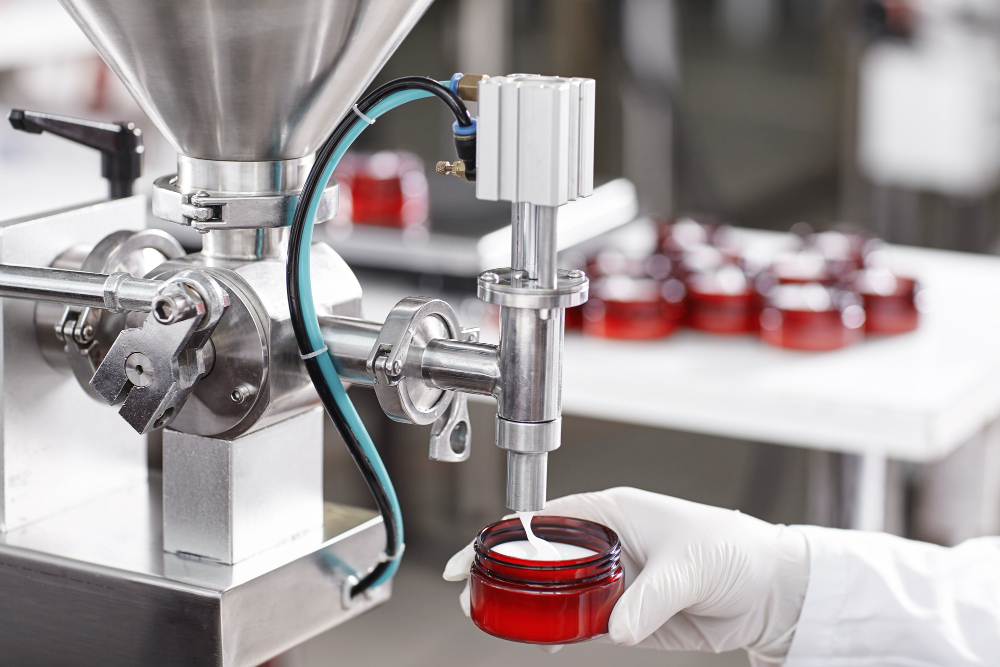Dispensing machines have become an indispensable technology across various industries. From food production and smartphones to medical devices and aerospace, dispensing technology plays a vital role in shaping the products we use every day. In this concise guide, we'll take you through the essential functions, operating principles, and applications of dispensing machines, with a particular focus on the key component: the dispensing needle. By the end, you'll have a deeper understanding of how dispensing technology is critical to modern manufacturing.
Table of Contents
- 1. How Does a Dispensing Machine Work?
- 2. Why Is Dispensing Technology So Precise?
- 3. Operating a Dispensing Machine: A Step-by-Step Process
- 4. Important Safety Precautions for Operating Dispensing Machines
- 5. Applications of Dispensing Machines Across Industries
- 6. Selecting the Right Dispensing Machine for Your Needs
How Does a Dispensing Machine Work?
At its core, a dispensing machine is a highly accurate "micro-quantitative liquid dispensing device." It applies adhesives, sealants, or any liquid with precision to specific locations. The primary applications of dispensing machines include bonding, sealing, protection, filling, coating, and assembly. High-quality dispensing technology ensures that products maintain superior quality and functionality, optimizing both performance and reliability.

A dispensing machine delivers excellent results with precise filling, bonding, and sealing at specific locations.
Why Is Dispensing Technology So Precise?
Dispensing machines rely on several key components for their accuracy, including a pressure source, pressure piping, pressure regulators, filters, dispensing controllers, and syringes (or cartridges). Compressed air enters the syringe, where a piston pushes the material toward the dispensing needle. The volume of material dispensed is determined by the distance the piston is pushed by the air pressure, which can be manually adjusted or controlled through software.

This precision needle valve incorporates a needle valve and diaphragm structure, ideal for dispensing liquids that contain fillers.
Operating a Dispensing Machine: A Step-by-Step Process
Dispensing machines are typically divided into two categories based on functionality: manual and automatic. With the continued advancement of technology, operating a dispensing machine has become increasingly intuitive. By following the correct procedures throughout the dispensing process, you can ensure top-tier performance and product quality.
- Pre-Dispensing Checks
- Ensure the operating environment is clean and organized to avoid disruptions.
- Inspect the machine for cleanliness and check for moisture, which could impact performance.
- Verify adhesive levels in the system.
- Pre-set heating or mixing systems according to adhesive requirements.
- Perform a thorough check on the pressure valves.
- Conduct a test run to ensure proper operation.
- The Dispensing Process
- Start the machine and monitor the material's appearance and weight to ensure it aligns with expectations. Adjust the settings as needed.
- Regularly check the total amount of material dispensed and recalibrate if necessary.
- Monitor the pressure source to ensure consistent airflow and smooth material dispensing.
- Post-Dispensing Checks
- Turn off any heating or mixing systems.
- Clean and inspect the dispensing needle and lines.
- If the machine will not be used for an extended period, disconnect the power source.
Important Safety Precautions for Operating Dispensing Machines
To maintain smooth operations and avoid accidents, it's essential to adhere to these safety guidelines when using a dispensing machine:
- Fully understand the properties of the material being dispensed to properly set the temperature and dispensing speed.
- Never touch the dispensing needle or moving parts during operation to prevent injury.
- Wear gloves to avoid skin contact with adhesives or sealants.
- Always disconnect the air and power sources before moving the equipment.
- Conduct regular safety checks to ensure that the dispensing machine is functioning properly and safely.
Applications of Dispensing Machines Across Industries
Dispensing machines are used to precisely apply liquids or adhesives to the surfaces or interiors of products. These machines are used across various industries, including:
- Electronics Manufacturing: Dispensing machines are critical in semiconductor packaging, motherboard assembly, and the protection of electronic components, ensuring precise assembly, sealing, and bonding.
- Automotive Industry: Applied in sealing body parts, headlights, windows, interior decorations, and lubricating engine components.
- Aerospace Industry: Dispensing machines are essential for bonding, sealing, and assembling composite materials and aircraft parts, contributing to the safety and performance of aviation systems.
- Medical Devices: Widely used in the assembly and sealing of medical device components such as syringes and other precision instruments.
- Optics and Technology: In optics, dispensing machines are used to assemble lenses, fiber optics, LEDs, and optical components.
- Machinery and Hardware: These machines are essential for part fixation, lubrication, sealing, and assembly in machinery and hardware manufacturing.
- Packaging Industry: Dispensing machines are commonly used in packaging, sealing, and filling in industries like food, pharmaceuticals, cosmetics, and industrial products.
Selecting the Right Dispensing Machine for Your Needs
As dispensing technology evolves, it's becoming essential across many industries. When choosing the right machine, it's important to consider your specific needs, such as the materials you're working with and your production setup. With so many options available, it's crucial to work with a reliable supplier who offers clear guidance and strong support. The right partner will help you get the most out of your equipment with training and ongoing service, ensuring smooth performance and long-term reliability.
Further Reading:
What is Dispensing Technology? Why It's Essential in Modern Manufacturing
How to Use a Dispensing Machine? Key Tips, Sequence, and Precautions!